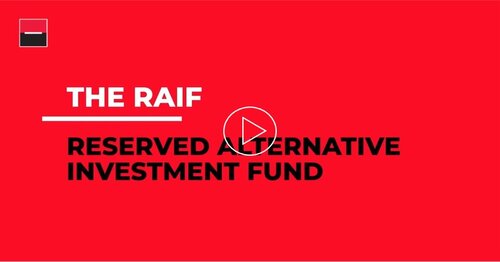
What is the RAIF (Reserved Alternative Investment Fund)?
What is the RAIF? Discover the Reserved Alternative Investment Fund, its features, benefits and how it works.
What is the RAIF: Reserved Alternative Investment Fund?
The RAIF is a Luxembourg product launched in 2016 and subject to AIFMD.
It is a collective investment structure for qualified investors. It offers investment opportunities in alternative assets such as private equity or real estate. It can be created as a multi-compartment investment structure.
AIFMD is a directive that regulates the managers of alternative investment funds and not the product itself, i.e. the AIF, or alternative investment fund. In other words, AIFMD grants managers a licence to create and manage alternative funds in any country in the European Union. The idea behind it was to offer a flexible alternative investment structure that could be set up quickly and, above all, positioned for competitive access to the European market for managers of alternative assets and AIFs located in third countries offering greater flexibility in terms of authorisation and supervision.
How does the RAIF work?
Firstly, it is a regulated product. That is, RAIFs are subject to the Luxembourg Law of 23 July 2016, even though RAIFs are not under the direct supervision of the CSSF, the competent authority in Luxembourg. So RAIFs do not need permission from the local authority to be established. Secondly, for a RAIF to be qualified as an AIF, under the AIFM Directive, at the time of launch, it must appoint a European manager who has this AIFM status, granted by the supervisory authority of the country where the asset manager has its official headquarters.
RAIFs is subject to the principle of diversification of investment risks, with the possibility of creating multiple compartments.
What is the situation with regards to the RAIF today?
It is a huge success that benefits all "AIFM" managers looking for a competitive alternative product, and it offers the same advantages as any other AIF.
What’s more, RAIFs can be wound up at a lower cost. The number of RAIFs rose to 200 structures shortly after the Law of 23 July 2016 came into force. Today, there are around 2,301 RAIFs according to the Luxembourg RCS (Trade and Companies Register). RAIFs are catching up with SIF structures (Special Investment Funds) as the ideal legal forms, especially for real estate funds.
SGSS offers RAIF administration and depositary services for AIFM managers based in EU countries.
Watch our interview with Jean-Pierre Gomez, Head of Regulatory & Public Affairs, SGSS Luxembourg:
Also read: All you need to know about the Luxembourg RAIF and the future Swiss L-QIF
Find out moreOur Focus form: Discover our presentation of the L-QIF & the Luxembourg RAIF and of their key elements (summary). Our To Know More form: Discover our analysis of the Luxembourg RAIF, their main impacts and their key dates. |
Questions/Answers
The RAIF, like any alternative investment fund, is not open to retail clients. In theory, it is a product intended to asset managers or asset owners or so-called well-advised/informed investors or high net worth individuals.
The first one concerns the very fast time-to-market since it is not required to obtain the agreement of the CSSF to be created, to be open to subscribers or to start its investment activity.
The second one is the range of investments possible with a much less limited percentage of diversification and greater flexibility in terms of eligible assets.
Different types of investment strategies are possible, ranging from the simple and direct purchase of real estate or via SPVs (special purpose vehicles), the purchase of private and unlisted companies, to less traditional investments in tangible assets (wine, cars, paintings/art collections, racehorses).
As with any AIF, a depositary bank, such as Societe Generale Securities Services, must be appointed to oversee the investment policy and restrictions described in the RAIF prospectus.




